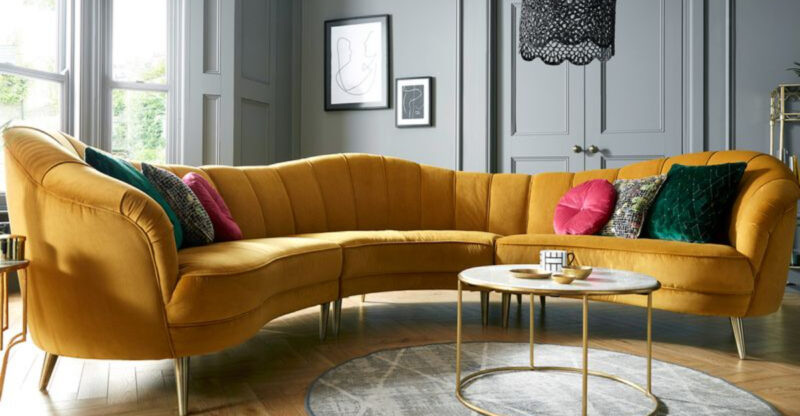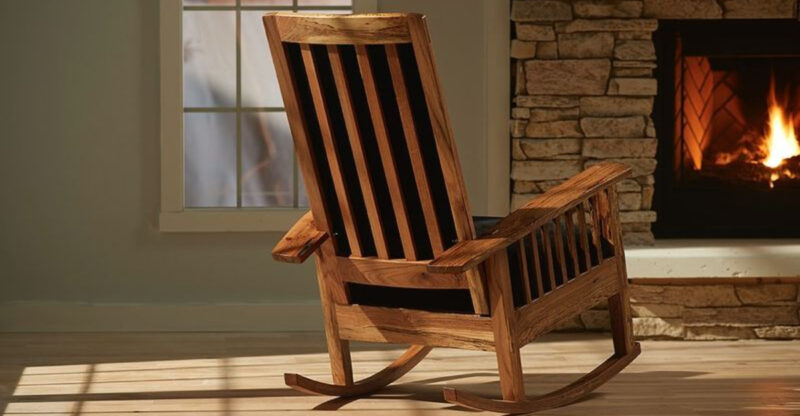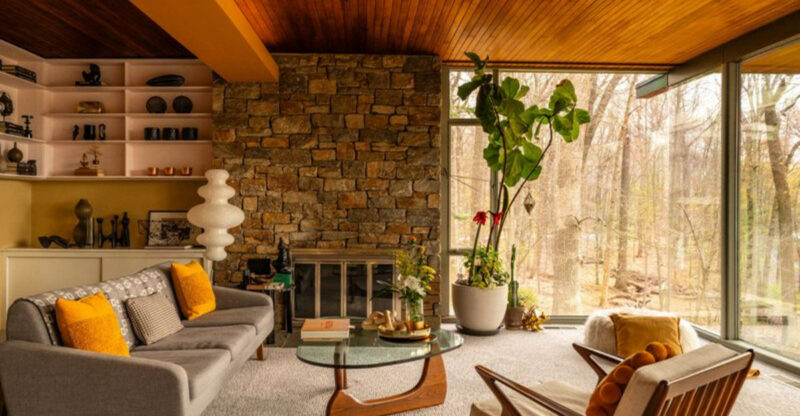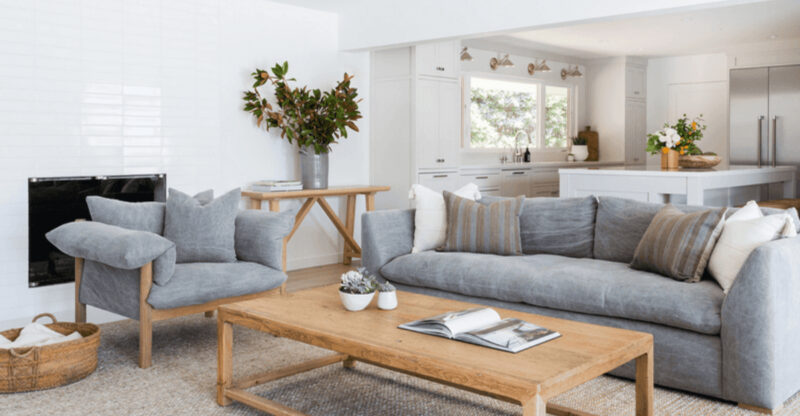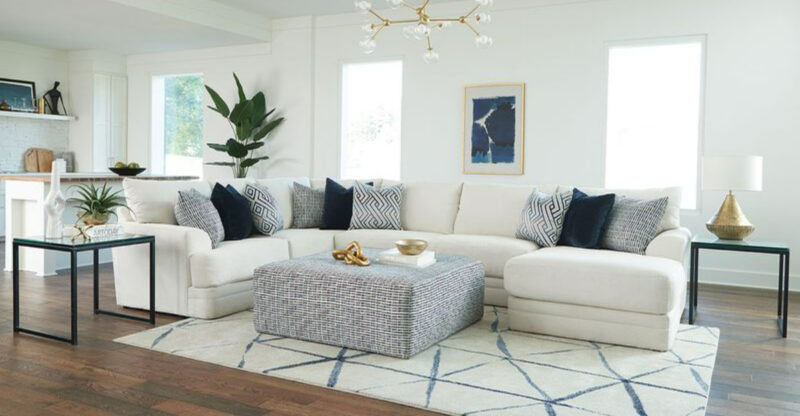Dallas Designers Reveal 13 Sofa Colors That Are No Longer In Style

Your living room sofa makes a big statement about your style and taste. But just like fashion, sofa color trends come and go.
I recently chatted with several top Dallas interior designers who shared which sofa colors they’re no longer recommending to clients.
If you’re planning to buy a new couch or reupholster your existing one, you might want to avoid these fading favorites that Dallas design experts say have lost their appeal.
1. Faded Favorites
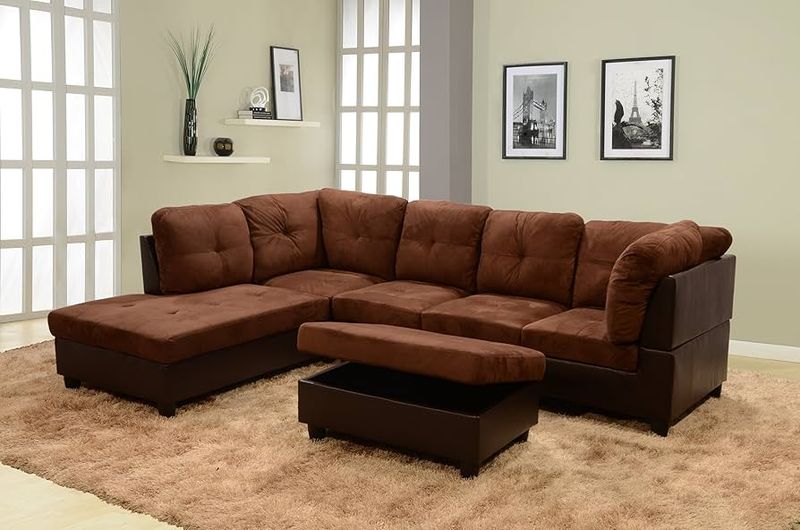
Brown microfiber sofas were once the darling of furniture showrooms across Dallas. Remember those chocolate-colored couches that promised stain resistance and durability? While practical, these dark brown sofas now read as dated relics from the early 2000s.
The flat, one-dimensional tone lacks the depth and character that today’s interiors demand. Many homeowners who invested in these pieces are now finding they don’t complement newer design elements.
If you’re still holding onto a brown microfiber sofa, consider slipcovers as a temporary solution. Dallas designers suggest moving toward textured neutrals or subtle patterns that offer more visual interest while maintaining practicality.
2. Out With Beige
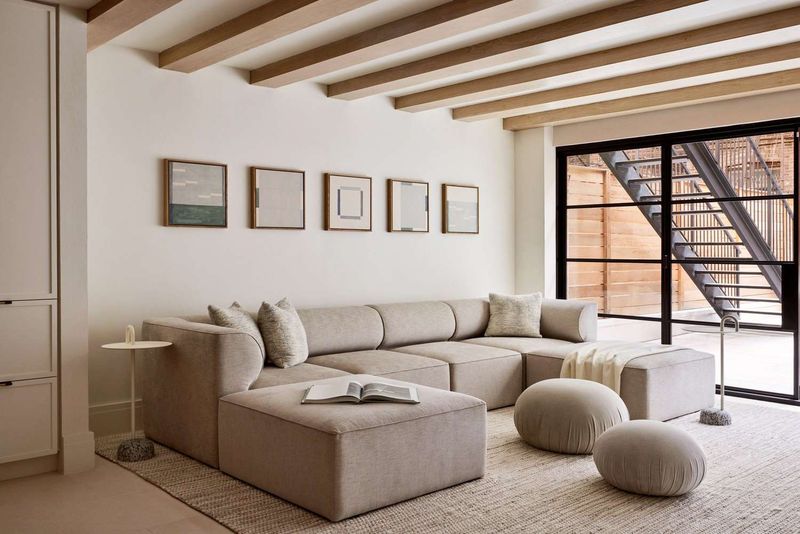
Flat beige sofas have lost their universal appeal according to Dallas design professionals. Not the warm, textured beiges that are making a comeback, but those flat, uninspired beiges that dominated the 90s and early 2000s.
These bland sofas often look dingy over time, showing every stain and fading unevenly in homes with lots of natural light. Many homeowners chose beige thinking it was a safe, timeless choice only to discover it dates a room faster than bolder options.
When replacing a beige sofa, designers suggest considering greige (gray-beige), warm whites, or oatmeal tones with texture that provide more dimension and hide wear better than their flat beige predecessors.
3. Over Gray

Cool gray sofas are rapidly falling from grace in Dallas homes. After dominating the design scene for nearly a decade, these once-trendy pieces now signal a dated interior that hasn’t evolved with current trends.
The problem with cool grays is their tendency to make spaces feel cold and impersonal. Many homeowners who jumped on the gray bandwagon are now finding their spaces feel sterile rather than inviting. Dallas designers point out that these sofas often clash with the warmer neutrals that are currently trending.
Instead of cool gray, today’s designers are embracing warmer grays with beige or taupe undertones that create more welcoming spaces. These new neutral options play better with both cool and warm accent colors.
4. Too Bold
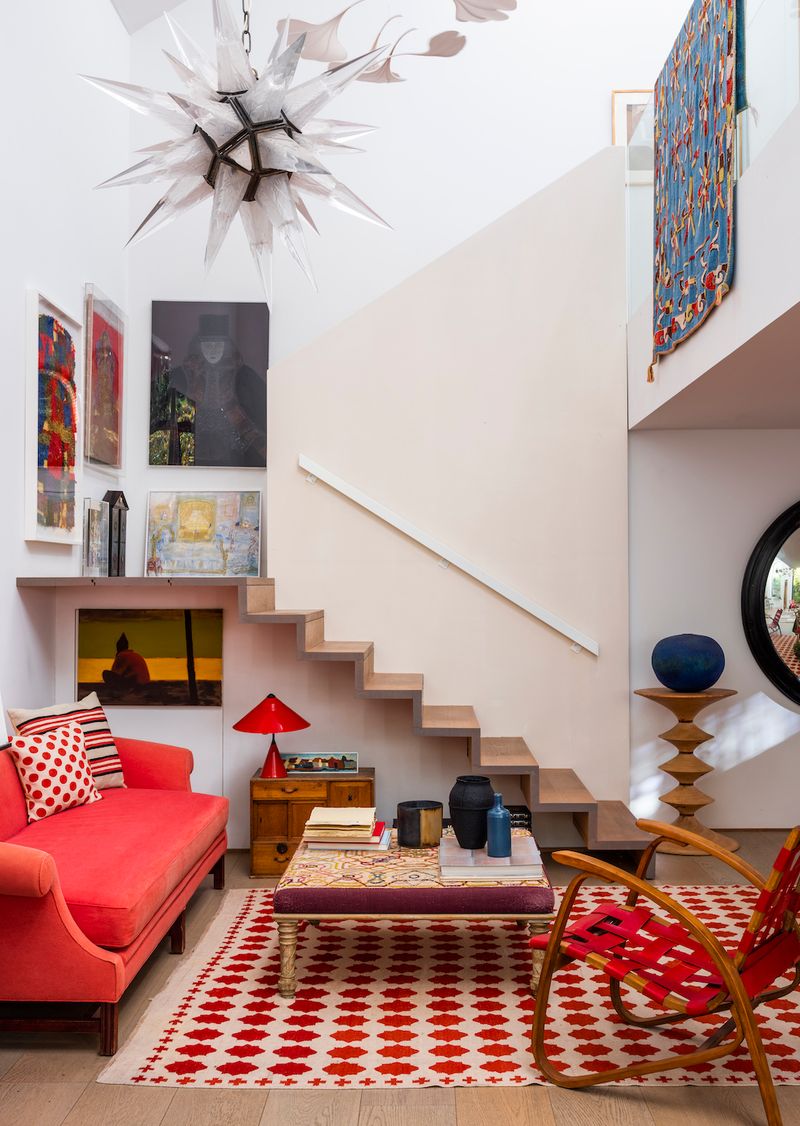
Fire engine red sofas are making Dallas designers cringe these days. This statement color that once seemed daring and fashionable now reads as overwhelming and difficult to design around.
Bright red creates such a dominant focal point that it limits your ability to change other elements in your space. Homeowners who invested in these bold pieces often find themselves stuck with limited decor options for the rest of the room. The intensity of the color can also create an unsettling energy that makes relaxation difficult.
If you’re still attracted to red, designers suggest deeper, more sophisticated shades like burgundy, garnet, or terracotta that offer warmth without overwhelming the space. These richer tones allow for more flexibility with surrounding decor.
5. Dull Neutrals
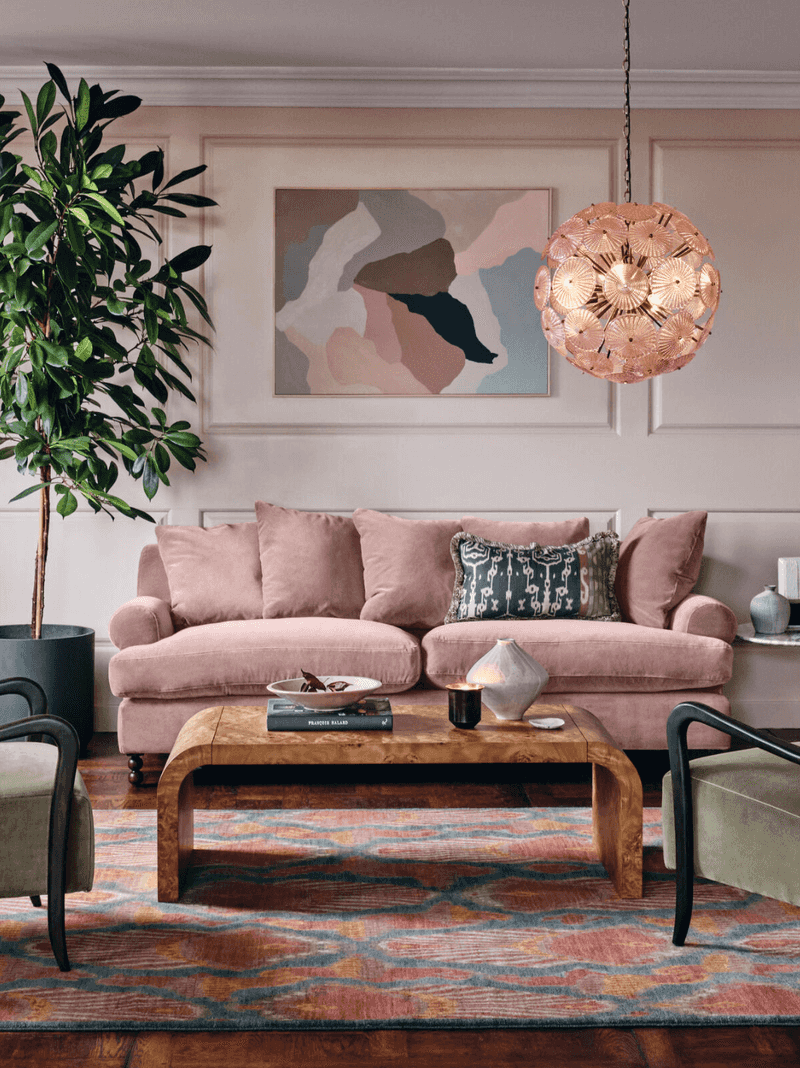
Taupe sofas with pink undertones are quickly falling out of favor among Dallas design circles. This specific neutral shade that was once considered sophisticated now dates a room instantly, reminding visitors of late 90s corporate offices and hotel lobbies.
The muddy pink undertones create a challenging base that fights with most accent colors. Many homeowners who chose this supposedly versatile color found themselves struggling to coordinate other furniture pieces and accessories. The shade also tends to make spaces feel stuffy and formal rather than relaxed.
When replacing these dated pieces, designers recommend cleaner neutrals with either distinctly warm or cool undertones rather than the ambiguous middle ground that taupe with pink undertones occupies.
6. Gone Greens
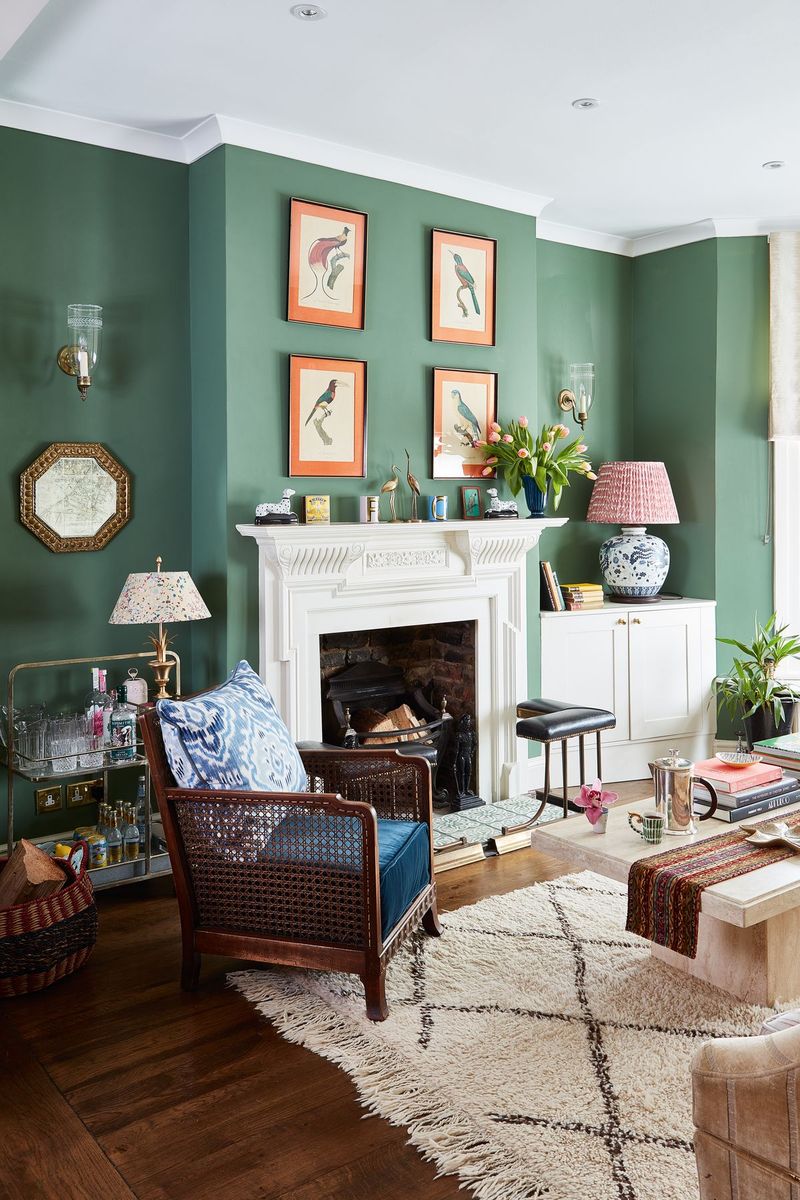
Hunter green sofas are rapidly disappearing from stylish Dallas homes. This deep, saturated green that dominated the 1990s now looks heavy and dated, especially when paired with the oak trim and brass accents that often accompanied it.
The darkness of hunter green creates spaces that feel smaller and more closed-in than today’s open, airy aesthetic preferences. Many homeowners with these sofas find they absorb light rather than reflect it, creating gloomy spaces. The color also tends to fade unevenly, looking patchy after years in sun-exposed rooms.
If you love green, designers suggest softer sage, elegant emerald, or trendy olive tones that bring nature indoors without the heaviness of traditional hunter green. These updated greens pair beautifully with today’s mixed metal finishes.
7. Outdated Blues
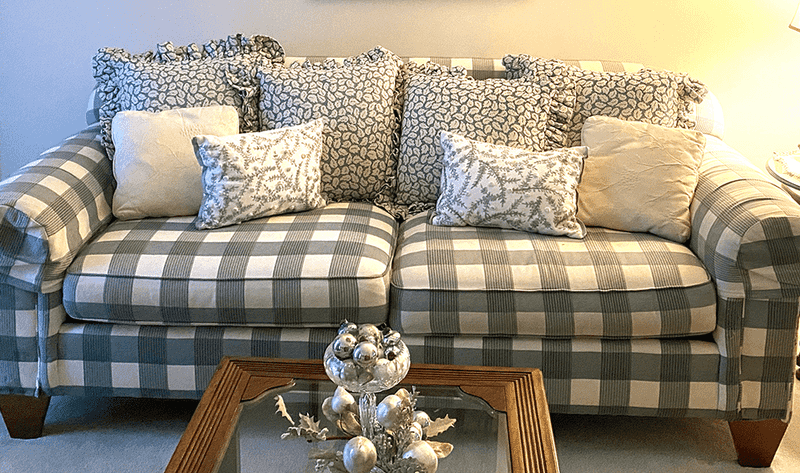
Country blue sofas are making Dallas designers shake their heads. This particular shade of blue – slightly dusty and often paired with mauve and cream in the late 80s and early 90s – instantly dates a living room.
The faded quality of country blue lacks the vibrancy and sophistication of today’s preferred blue tones. Homeowners who still have these pieces often find they clash with contemporary color schemes and make spaces feel like time capsules rather than current, lived-in homes. The color can also make rooms feel cooler and less inviting than warmer tones.
For blue lovers, designers recommend navy, indigo, or peacock tones that offer richness and depth while still providing versatility. These updated blues work beautifully with today’s brass and gold accents.
8. Tired Tones
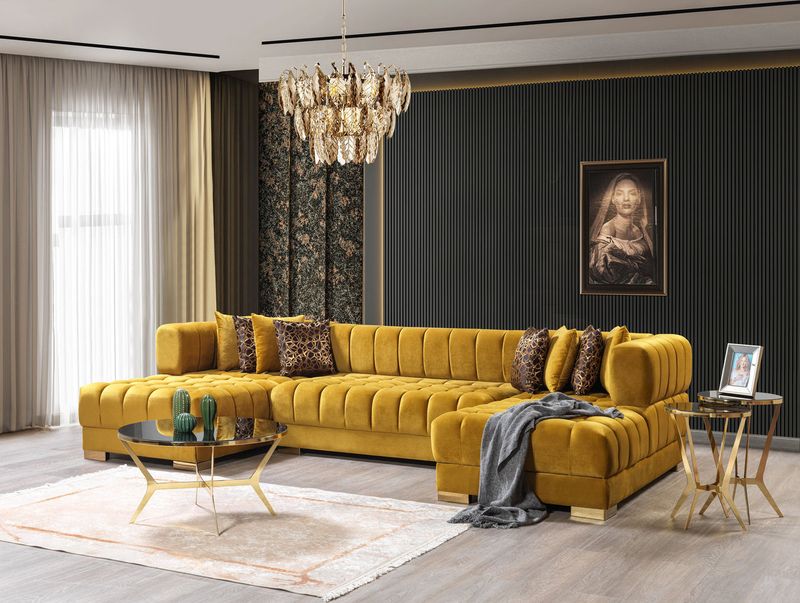
Mustard yellow sofas have lost their appeal according to Dallas design experts. This trendy color that peaked around 2015-2018 now signals a dated attempt at being fashion-forward rather than a timeless choice.
The problem with mustard is its specific color profile that ties strongly to a particular era of design. Many homeowners who chose these statement pieces are now finding they’re difficult to incorporate into evolving interior styles. The yellow undertones can also clash with changing paint colors and flooring options.
When replacing a mustard sofa, designers suggest considering more enduring options like camel leather or textured cream that provide warmth without being tied to a specific trend cycle. These alternatives offer similar coziness with greater longevity.
9. Misused Black
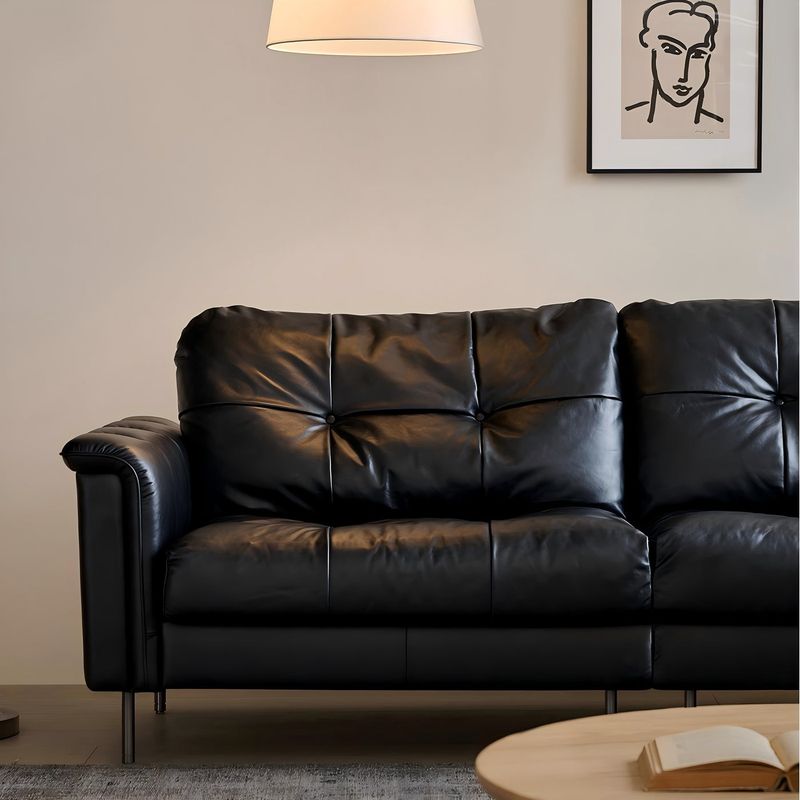
Black leather sofas are losing favor in Dallas homes, particularly in smaller living spaces. Once considered sleek and masculine, these dark pieces now often read as heavy, light-absorbing masses that dominate rooms inappropriately.
The high contrast between black leather and lighter elements creates visual weight that can make spaces feel unbalanced. Many homeowners with these sofas struggle with the way they show dust, pet hair, and scratches so prominently. The material also tends to feel uncomfortably hot in summer and cold in winter.
If you appreciate leather’s durability, designers suggest cognac, camel, or even navy leather options that offer richness without the stark contrast of black. These alternatives age beautifully while providing more design flexibility for the surrounding space.
10. Dusty Rose Drop
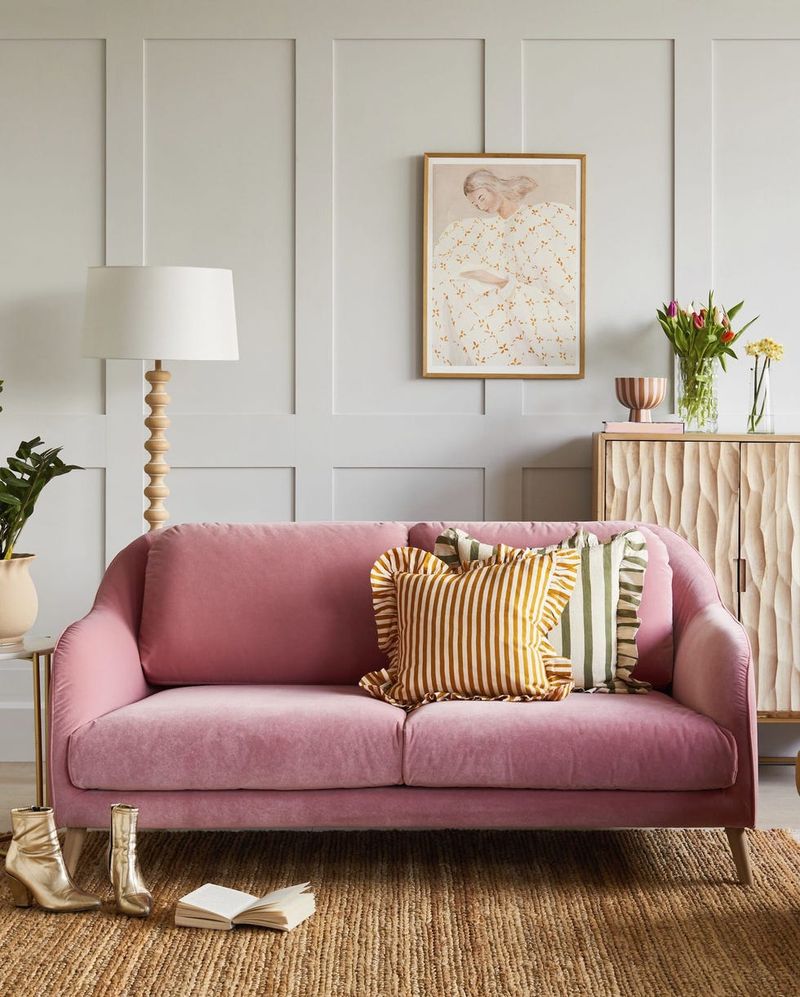
Dusty rose sofas are quickly fading from Dallas designers’ recommendations. This muted pink tone that enjoyed popularity during the mid-2010s now appears dated rather than delicate and sophisticated as once intended.
The specific blush undertone often clashes with current color trends, making it difficult to update a room without replacing the sofa. Many homeowners who chose this color hoping for subtle femininity found instead that it reads as indecisive – neither a true neutral nor a committed accent color. The shade also tends to show wear patterns more visibly than other options.
For those who love softer tones, designers now suggest warm ivory, subtle terracotta, or even lavender as alternatives that provide similar softness with more current appeal and greater staying power.
11. Bye Burnt Orange
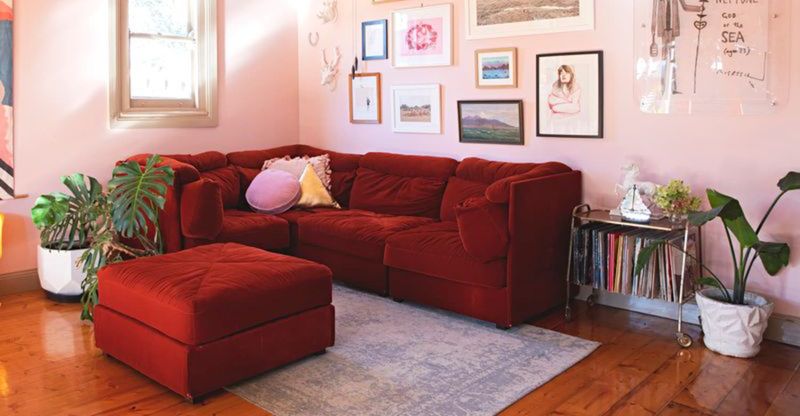
Burnt orange sofas are rapidly declining in popularity according to Dallas interior experts. Despite Texas’s love affair with this particular hue, the specific tone that dominated early 2000s Tuscan-inspired interiors now looks decidedly dated.
The heavy, earthy quality of burnt orange ties strongly to a specific design era characterized by dark wood, wrought iron, and faux finishes. Many homeowners with these pieces find they’re difficult to incorporate into today’s lighter, more relaxed interiors. The color can also make spaces feel smaller and more closed-in than contemporary preferences.
When replacing burnt orange, designers suggest considering terracotta or clay tones that provide similar warmth with a fresher, more current feel that pairs beautifully with today’s natural materials and lighter woods.
12. No More Navy
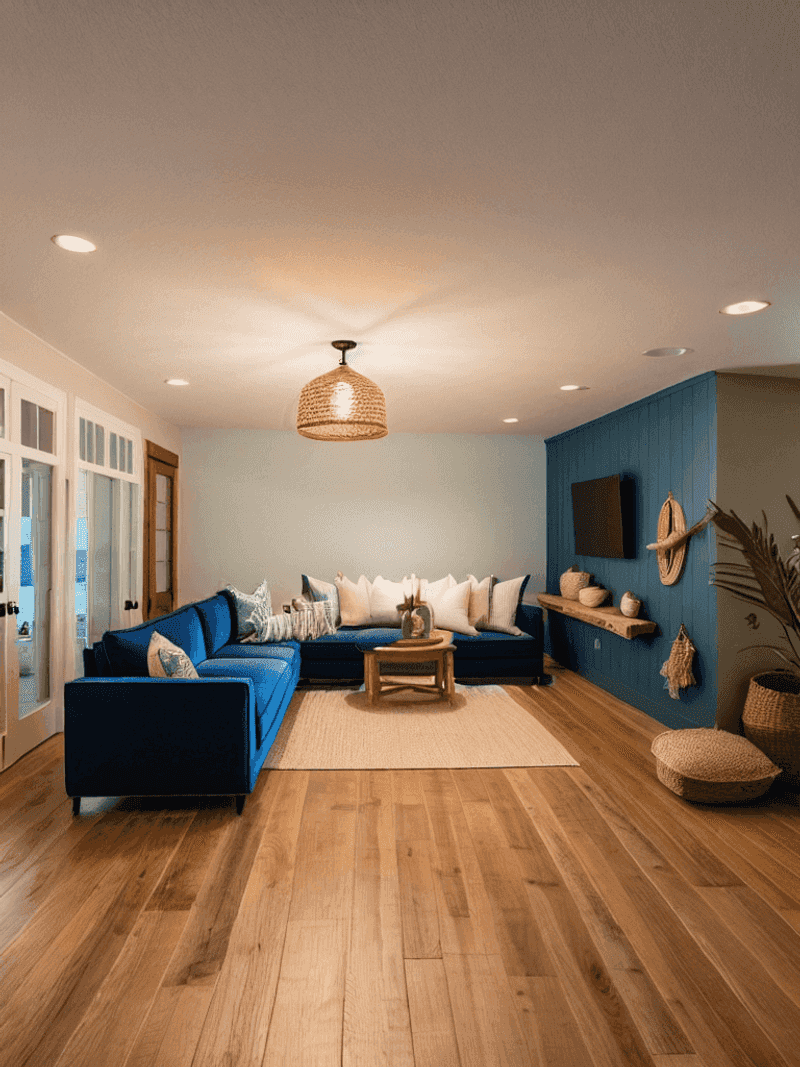
Navy blue sofas with contrast white piping are losing their appeal in Dallas homes. This preppy, nautical-inspired look that dominated coastal and traditional interiors now appears contrived rather than classic.
The high-contrast trim creates a visual boundary that can make rooms feel more formal and less relaxed than today’s preferred casual elegance. Many homeowners who embraced this style are finding it difficult to evolve their spaces without replacing these distinctive pieces. The white piping also tends to soil easily, requiring frequent cleaning.
If you love blue, designers suggest solid navy in rich velvet or textured fabric without contrast piping for a more timeless approach. This updated take provides the same depth of color without the dated coastal connotations that limit design flexibility.
13. Past Trends
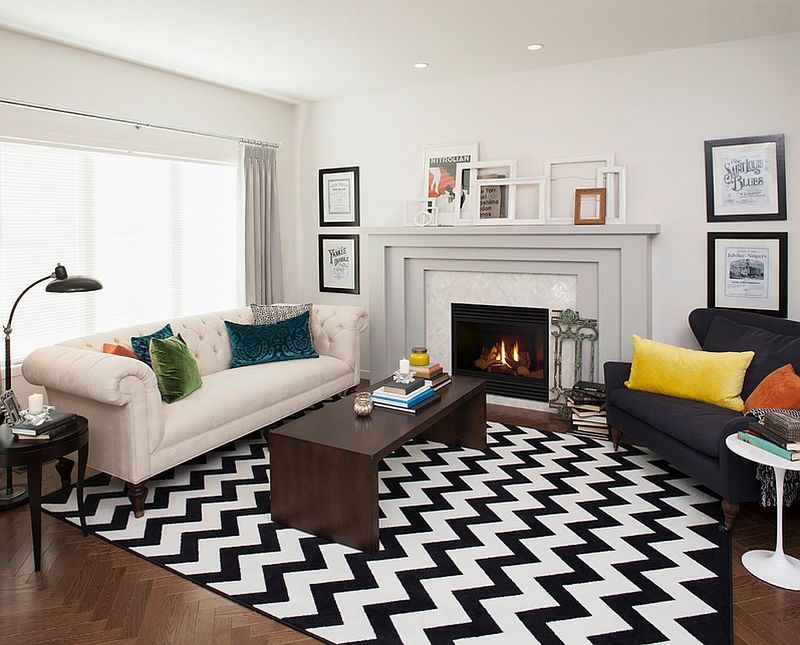
Chevron pattern sofas are making Dallas designers cringe these days. This bold zigzag pattern that dominated design blogs and Pinterest boards around 2012-2015 now instantly dates a living room to that specific era.
The high-contrast, geometric pattern that once seemed fresh and modern now appears busy and distracting. Many homeowners who embraced this trend find their sofas fighting with other elements in the room rather than complementing them. The distinctive pattern also makes it challenging to introduce new accessories or art without creating visual chaos.
When replacing chevron pieces, designers recommend subtle textures and small-scale patterns that add interest without overwhelming the space. These more nuanced options provide visual depth while allowing greater flexibility with surrounding decor elements.

